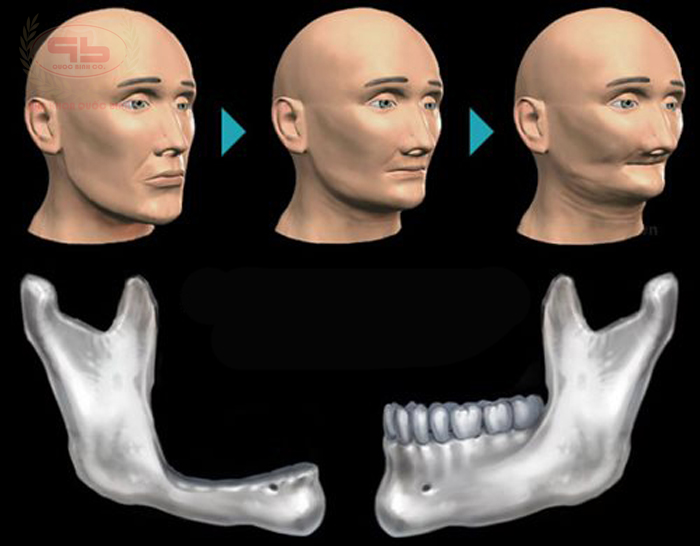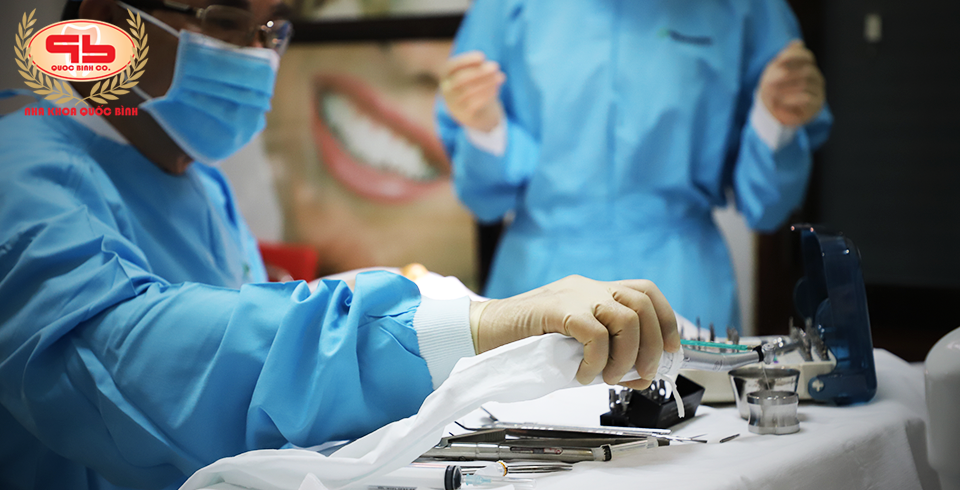At any age, tooth loss may occur. Although this is considered a great loss, and indeed the consequences are much more serious. Loss of teeth leads to the loss of jawbone. So the question arises: How long after teeth loss then jawbone loss?
Normally, when teeth are lost, people only think about losing the tooth that is losing its aesthetic or interrupting chewing function. However, in fact, the jawbone loss should be considered first.
Do you know what is the jawbone loss??
Jawbone loss is a gradual loss of bone at the site of tooth loss. This is a condition of declining density, quantity and quality of jaw bone. This makes the tooth loss place recess, shrinking gums, deforming face, wrinkled skin, aging.

The most obvious cause of this condition is the uneven force of chewing on the normal areas and tooth loss area. No more stimulating factors to develop or bone anchors help stabilize, then the jawbone loss process will take place quickly.
How long after teeth loss then jawbone loss?
Jaw bone is quite special structure, it adheres to the root to form a solid block. However, it still provides an elasticity in chewing food, and has the function of supporting teeth firmly.
When the teeth remain intact, the force of chewing stimulates the bones to maintain stable bone cells. When losing teeth, there are no objects to transmit chewing force; At the same time, there are no permanent fixture so gradually bone cells will be dissolved.
After the tooth is lost, the process of jawbone loss takes place quickly or slowly, depending on the nature of each person. Or depending on the oral health of the subject. However, according to medical research, usually about 3 months after tooth loss, bone density will gradually decrease. Early signs of jaw bone loss are difficult to see, but can be observed when CT cone beam is taken. And the most obvious manifestation when the jawbone loss stage has become serious is when the gum is atrophied, and the face is deformed…
How many forms of the jawbone loss?
@ Loss of bone horizontally. Description is calculated from one root to the other. This bone area is narrowed, leading to the widening of the jawbone of the surrounding areas. The adjacent tooth have sign is tilted, skewed to the position of tooth loss.
@ Longitudinal bone loss: described in the upper – lower part of the jawbone area. You will see in the area of tooth loss, the bone surface just below the gum is concave, sunken in comparison with the adjacent bone areas. The gums gradually become shrinking.
@ Loss of upper jawbone: in the direction of gradually disappearing to the jaw sinuses. You will see the situation toothless very clearly.
@ Loss of upper and lower jaw bone. When losing many teeth in both upper and lower jaws; You will see a clear imbalance when observing the face from the outside. Mouth mold may be distorted, toothless, protruding chin, the cheek is sunk, wrinkled skin…
Please note: If treatment of jawbone retention is not timely; And when the lower jaw bone is dissipated so much, it will lead to the influence of the distribution of neural tubes below. At this time, recovery by bone grafting will be more difficult if you want to make dental Implant…
How to prevent and effectively remedy jawbone loss after losing teeth?
As the content presented above, loss of teeth leads to the loss of jaw bone. And this is the natural thing of the body. So if you don’t recover your teeth immediately, you will be at this risk.
The only measure currently effective and safe helps keep the jawbone intact after losing teeth is the dental implant.
When the Titanium post placed into the jaw bone, it replace the true root. This material integrates with bones into a solid block. Create a grip and receive chewing force to help bone cells grow stably. At the same time, prevent periodontal inflammation, tooth out opposite area, or deflect adjacent teeth…
On the other hand, the top of Implant is connected to porcelain crown, forming a perfect tooth like a real tooth.
The benefits of Implant not only stop at preventing the jawbone loss
Compared with the old method used to recover lost teeth is porcelain bridge, or removable dentures, dental Implant has many outstanding advantages:
- Restores aesthetic and function almost 100% compared to real teeth.
- Dental Implant is durable with time, no abrasion or rust, body-friendly material.
- Implant integrated with jaw bone constitutes a solid block, so there is no shift, or loose as the old method.
- Implants do not affect the adjacent teeth. Loss of teeth in any position, transplant right there. You have new teeth right away, and don’t need to sharpen adjacent teeth.
- Implementation costs are higher than the old method; But if broken down over a period of use of a few dozen years, you will find this is the best saving method.
Note: in the case of jawbone loss took place before implants, it is necessary to assess the level of bone loss to decide whether to have a bone grafting.
For a better understanding, please schedule a consultation directly with a specialist at the Quoc Binh Dental Clinic.
Facility 1: 19 Pham Hong Thai, Ward 7, Vung Tau
Facility 2: 28 Le Loi, Ward 4, Vung Tau.
Hotline: 0914 83 99 66
Online consultation page: https://www.facebook.com/nhakhoathammyvungtau/

